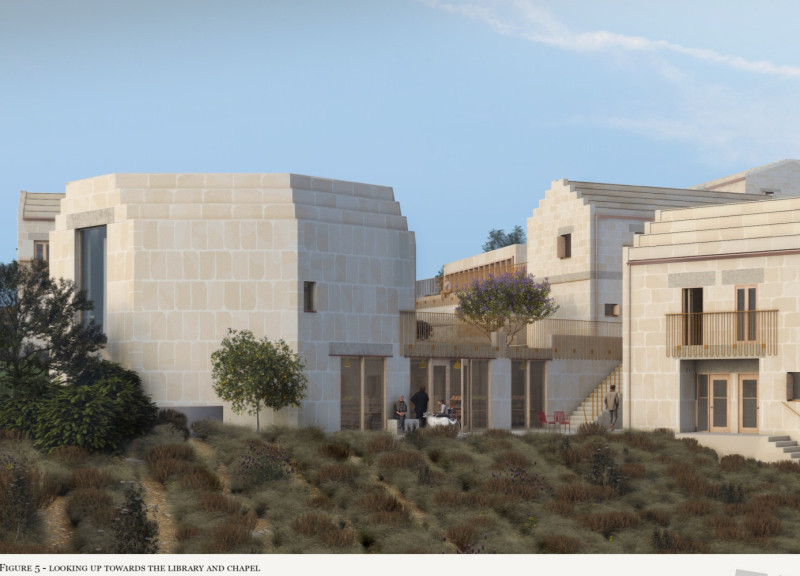5 key facts about this project
The central plaza serves as the heart of the project, designed to accommodate various communal activities and social gatherings. This space is complemented by strategically located functional areas such as a library and a chapel, catering to diverse needs and experiences within the community. By maintaining a focus on diverse interaction points, the design ensures that residents have ample opportunities for social engagement while still feeling connected to their personal lives.
Each building within the project is thoughtfully constructed using a selection of local materials that resonate with the surrounding context. Limestone, with its inherent thermal properties, is prominently used, ensuring that the design remains not only aesthetically pleasing but also efficient in energy usage. The incorporation of timber for flooring and roof framing adds warmth to the interiors, while the use of decorative tiles enhances the visual quality of individual living spaces. This commitment to local materiality not only supports regional economies but also ensures a sustainable approach to construction.
One of the notable aspects of the design is its focus on accessibility. Wide pathways and clear entrances are strategically integrated, allowing residents of all abilities to navigate the site comfortably. This attention to accessibility highlights an understanding of modern community needs, ensuring that everyone feels welcomed and included within the project. Furthermore, the flexibility of the units allows residents the opportunity to adapt their homes according to their personal preferences, enhancing their sense of ownership and connection to the space.
The design also addresses environmental considerations by utilizing passive strategies, such as natural ventilation and thermal mass. Well-placed windows and openings promote cross-ventilation, contributing to year-round comfort while minimizing reliance on mechanical heating and cooling systems. Additionally, landscaped gardens featuring native vegetation enrich the environmental performance of the project, promoting biodiversity while also serving as recreational spaces for residents.
Through this comprehensive architectural design, which integrates community needs into its layout and aesthetics, the project offers a modern interpretation of living arrangements. The balance it strikes between private and communal spaces reflects an understanding of contemporary lifestyle demands, making it a relevant example of thoughtful architecture. This project invites exploration and discussion, encouraging interested parties to delve deeper into the architectural plans, sections, designs, and ideas that underpin its development. For those seeking insights into modern architectural practices, the presentation of this project serves as a valuable resource worth exploring.


























